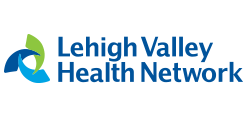An Expert Consensus of Acceptable Scholarly Activities in Emergency Medicine Residency Training Programs.
Publication/Presentation Date
10-10-2024
Abstract
BACKGROUND: Scholarly activity (SA) has been interpreted inconsistently between allopathic and osteopathic emergency medicine programs, but the acceptable methods to achieve this requirement must be re-evaluated, particularly in the light of the merger of allopathic and osteopathic programs to form the Single Accreditation System. This paper describes the results of inquiry from a series of meetings of the Research, Scholarly Activity, and Innovation section of the American College of Emergency Physicians.
OBJECTIVE: This study aimed to describe differences between allopathic and osteopathic emergency medicine programs and their SA requirements. The authors set out to scrutinize different forms of SA on the basis of the venerated models of Boyer and Glassick.
METHODS: The authors conducted a systematic qualitative review of the SA models in academic literature using the criteria of Boyer and Glassick. The authors then compared the allopathic and osteopathic emergency medicine SA requirements and made recommendations about how to evaluate proposed SAs and rated various forms of SA on the basis of the Boyer and Glassick models.
EVIDENCE REVIEW: Allopathic programs have required "scholarly activity," which includes many types of activities, while osteopathic programs have traditionally required "research." Traditionally, allopathic programs have provided more structural support and faculty involvement in resident SA than have osteopathic programs.
CONCLUSION: Objective criteria, such as those of Boyer and Glassick, should be used to determine if a given activity is truly scholarly. A residency which determines that a proposed activity meets these objective criteria is less likely to be cited by the Accreditation Council for Graduate Medical Education (ACGME), and more likely to fulfill the SA requirements. The authors propose the Individual Scholarly Activity Plan as a method to set agreed-upon goals and track resident and faculty progress towards completion and facilitate career advancement among both residents and faculty.
ISSN
0736-4679
Published In/Presented At
Garg, N., Totten, V. Y., Greenberg, M. R., Wilkerson, G., Finnell, J. T., Lau, W. B., Miner, J. R., d'Etienne, J. P., Brenner, J. D., Kumar, P., & Camargo, C. A., Jr (2024). An Expert Consensus of Acceptable Scholarly Activities in Emergency Medicine Residency Training Programs. The Journal of emergency medicine, S0736-4679(24)00319-6. Advance online publication. https://doi.org/10.1016/j.jemermed.2024.10.002
Disciplines
Medicine and Health Sciences
PubMedID
39952821
Department(s)
Department of Emergency Medicine
Document Type
Article

